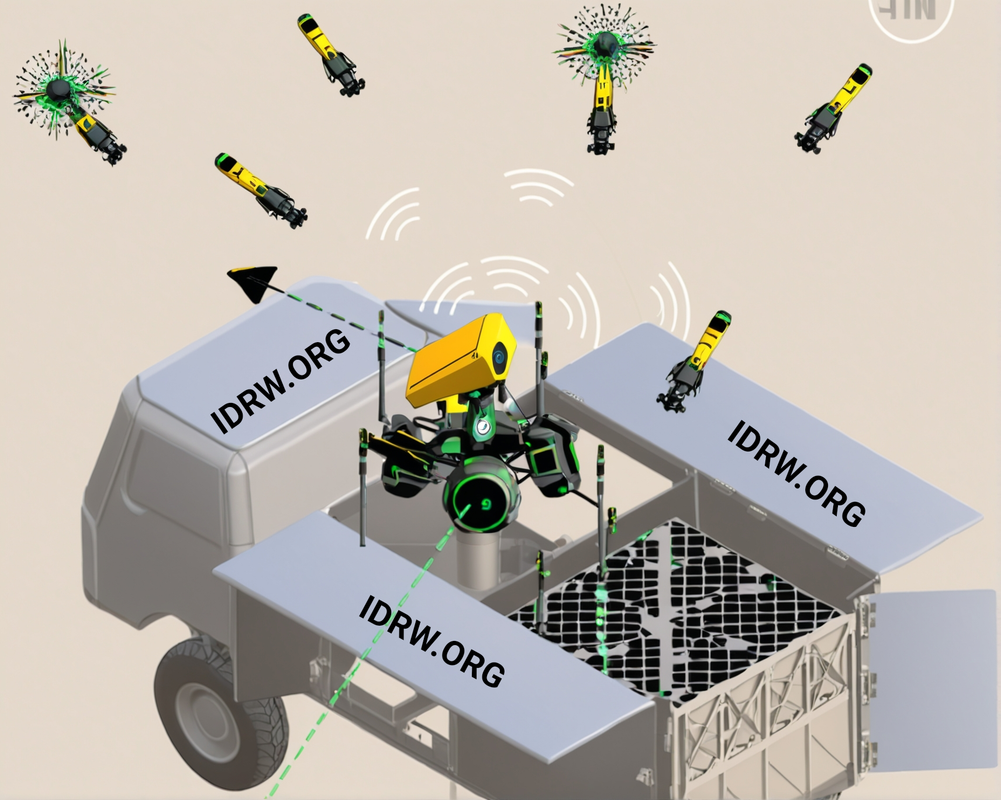SOURCE: RAUNAK KUNDE / NEWS BEAT / IDRW.ORG


In response to the growing threat of drone swarms targeting vital installations, the Indian Air Force (IAF) has called on private sector companies to collaborate in the design and development of a multi-domain launch capable loitering aerial interceptor system. This innovative solution aims to counter swarm-drone attacks, one of the most pressing challenges in modern air defense. The system will feature autonomous, multi-drone swarms capable of neutralizing multiple airborne threats with a combination of hard and soft kill mechanisms.
The IAF recognizes that the use of drone swarms by adversaries has introduced a complex threat environment. Swarms are difficult to intercept using traditional methods due to their distributed nature, speed, and collaborative behavior. As such, the IAF’s vision is to develop an autonomous system that can intercept, engage, and neutralize multiple drones simultaneously.
The key requirements of the system are as follows:
Collaborative Swarm Neutralization: The system must be capable of acting against multiple drones in a swarm attack, utilizing a network of drones that work collaboratively to intercept and neutralize individual targets. Each drone in the swarm will play a role in disrupting or disabling the incoming threats.
Modular Design for Versatility: The IAF envisions a system with a modular design to allow flexibility in deployment. This includes interchangeable payloads for hard kill (destruction) and soft kill (disabling) mechanisms such as communication disruption, navigation interference, sensor disabling, or electromagnetic pulse (EMP) attacks. A modular warhead compartment will allow future customization based on evolving threats and available technologies.
Tube-Launched and Easily Deployable: The drones may be based on a tube-launched system or any other easily portable design, allowing for rapid deployment and long-term storage in harsh environments. This would enable quick launches from ground vehicles, static installations, or even naval and aerial platforms.
Key Features of the Swarm-Drone Interceptor System Requested
1. Loitering Capability
The drones must be capable of loitering over vital installations, waiting for an incoming drone threat. Upon detecting the threat, the system will autonomously launch its swarm of interceptors to neutralize the incoming attack. The loitering ability ensures the system remains on standby, ready to engage at any time.
2. Reconfigurable Sensor Payloads
To maximize versatility, the system will feature a reconfigurable sensor payload bay or nose cone design, allowing the drones to be equipped with different types of sensors. These could include RF homing, radar guidance, electro-optical (EO) guidance, or data links, ensuring the system can adapt to various types of threats without significant design changes. This allows for easy integration with existing IAF systems and provides flexibility for future upgrades.
3. Neutralization Mechanisms
The system will offer a range of neutralization options. This could include:
- Hard Kill: Physical destruction of the threat drone using explosives or kinetic means.
- Soft Kill: Disruption of the drone’s communication, navigation, or control systems.
- Sensor Disabling: Interfering with the drone’s sensors to render it ineffective.
- Electromagnetic Pulse (EMP): Disabling electronic components through EMP technology.
4. Multi-Platform Deployment
The interceptor system is expected to be portable and deployable across various platforms, including vehicles, rail, ships, and aircraft. This ensures that it can be rapidly transported to areas of operation, making it a highly mobile solution for different mission scenarios.
5. IFF Integration
To avoid friendly fire incidents, the system will feature an Integral Identification Friend or Foe (IFF) capability, ensuring it can distinguish between friendly and hostile drones or aircraft.
The IAF is pushing for cutting-edge technologies that allow for swarm autonomy. Using advanced algorithms, the system should be able to perform autonomous target allocation and interception without requiring manual intervention.
The interceptor system must be capable of operating at altitudes of up to 5,000 meters or more, providing a wide operational range. Its protocols, communication structure, and interface control documents (ICD) must be made available for seamless integration with existing and future IAF systems.
The IAF is also prioritizing a system that is sustainable for long-term use in harsh environments, with the ability to be stored for extended periods and then rapidly deployed as needed. This capability is essential for maintaining continuous defense over key assets.
NOTE : Article cannot be reproduced without written permission of idrw.org in any form even for YouTube Videos to avoid Copy right strikes. Websites doing illegal reproductions will get DMCA and Legal Notices.